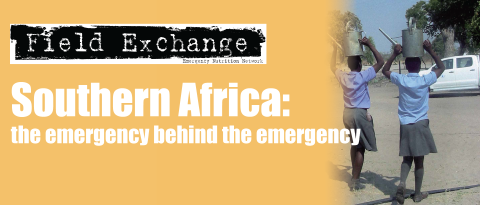Is food aid effective?
Summary of published research1
A recent article by food aid guru Ed Clay sets out current thinking about the effectiveness of food aid. While some agencies and experts advocate increasing food aid because of high levels of poverty-related malnutrition and increasing frequency and scale of natural disasters and conflict situation, others argue that food aid distorts local markets by discouraging agricultural development and displacing trade.
Clay argues that any assessment of the impact of food aid must consider the different types of food aid and donor practices. For example, emergency food aid saves lives and limits nutritional stress in crises. However, tying aid can restrict what foods are available and late arrival frequently hampers post-crisis agricultural recovery. Clay asks whether tying food aid matters. Most food aid channelled through the World Food Programme (WFP) and non-governmental organisations (NGOs) come 'in kind' and is sourced in the donor country. This is tied aid. WFP and NGOs would prefer to receive cash (untied aid), which would allow them to buy food locally or in neighbouring countries as this provides more appropriate and timely food and is more likely to benefit the local community. Untied aid is also cheaper. A DAC study by OECD in 2002 found that;
- Tied aid cost at least 50 percent more than food aid acquired locally.
- Tied aid cost 33 percent more than imports from other developing countries.
- If donors untie their food aid completely, approximately US$750 million could be released for further aid.
Around 90% of global food aid was tied in 2002. This proportion fell to 74% in 2004 but remains at over 99% for the USA who favour tied food aid because it supports their own farmers, food processors and USA-registered shipping. In contrast, European donors buy most of their food aid in developing countries.
During 2004 to 2005, Australia, Canada, Denmark, and France moved to further untie their food aid. USA aid administrators are trying to change the law so the US government can finance some developing country food purchases for distribution in crisis situations. However, Congress has so far rejected such proposals. As the biggest contributor of food aid to the WFP and NGOs, it is vital that the USA achieves this policy change.
Clay also asserts that food-based longerterm programmes, including so-called protracted relief and development projects, to reduce the impact of shocks are overlapping categories and therefore are an area of ambiguity. The decision to fund local purchase or imported food depends on risks of distorting the local economy, whether the transfer of food is efficient and whether other poverty reduction objectives are addressed. Monetisation, where tied imports are sold to finance development projects, is seen as a useful additional resource by some USA-based NGOs, but is controversial because of the high risk of distorting local and regional markets.
Programme food aid for budgetary support to governments has declined with the reduction in stored surpluses, especially from the USA. Assessments have highlighted ineffectiveness, especially in promoting national economic development, poor transfer efficiency and likely trade displacement. Furthermore, food aid is becoming more volatile and pro-cyclical (least available when international prices are high). The increasing priority given to humanitarian crises means that some countries are excluded or marginalised.
Clay asks how food aid can provide effective support to longer-term poverty reduction and other development objectives. He answers the question thus; "financial aid or cash is almost always the most effective and efficient way of funding either food distribution or providing budgetary support. A context-specific justification should always be provided for using food aid in preference to financial aid".
1Clay. E (2006). Is food aid effective? Id21 insights, vol 61, April 2006, pp 6
Imported from FEX website


